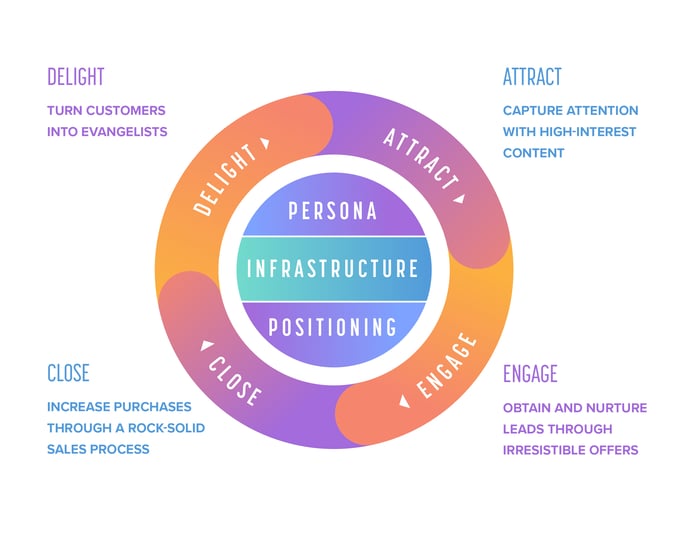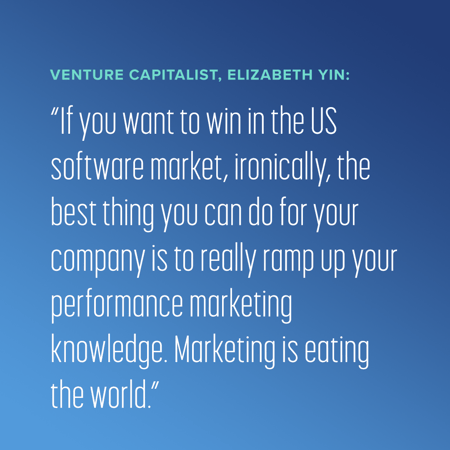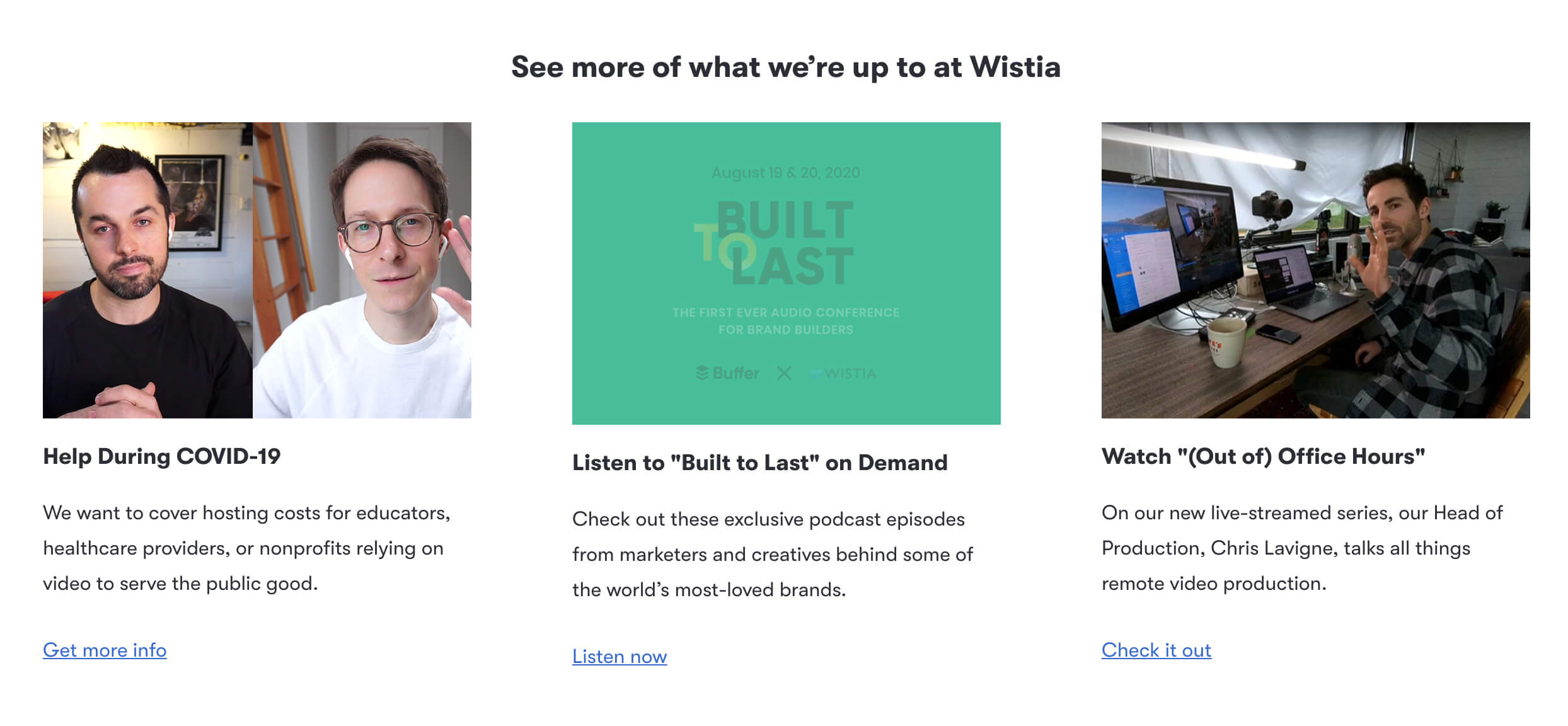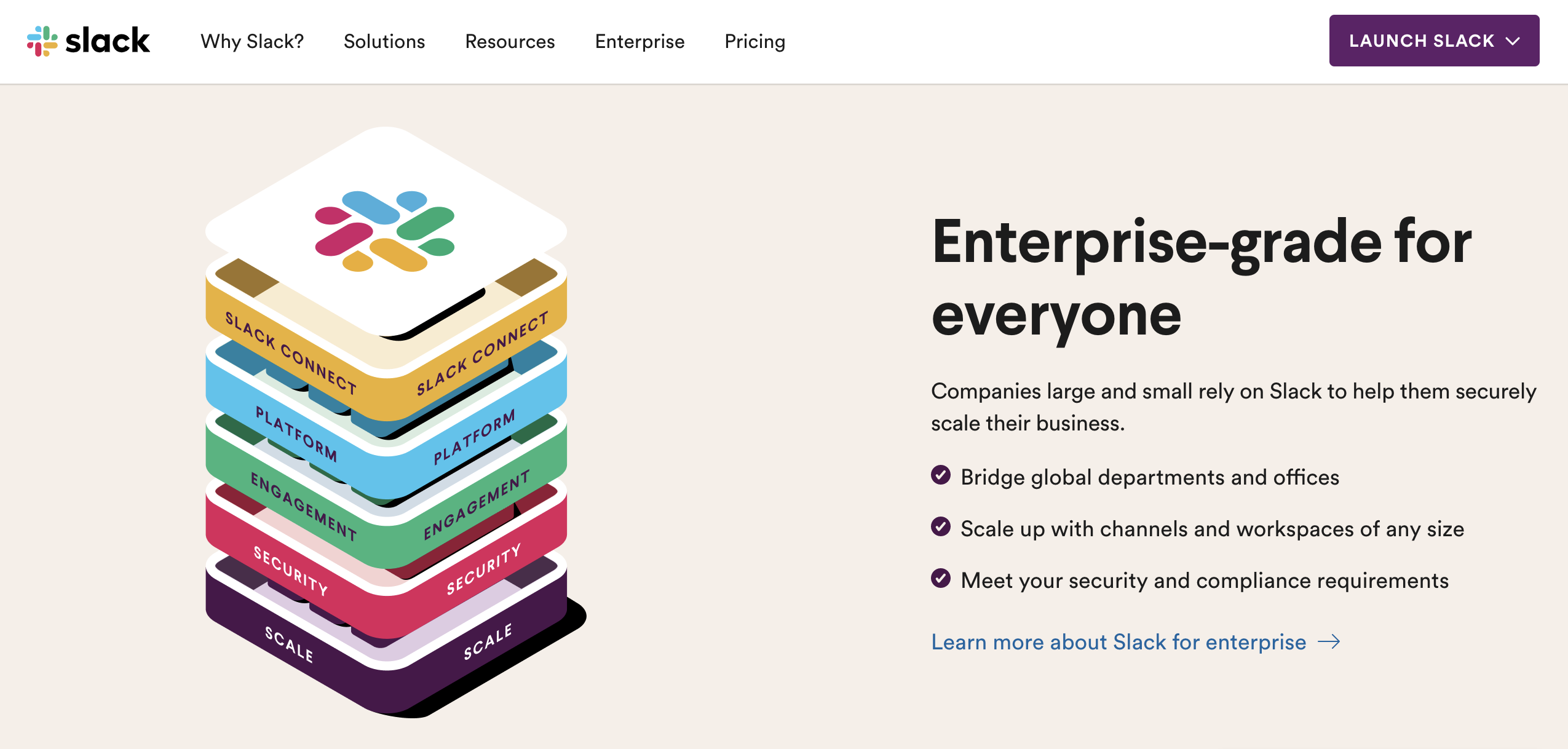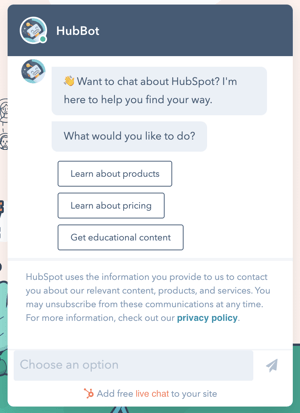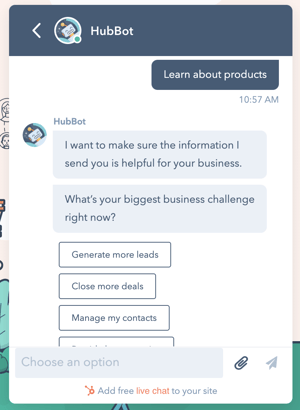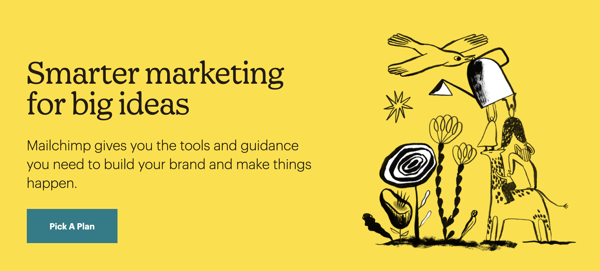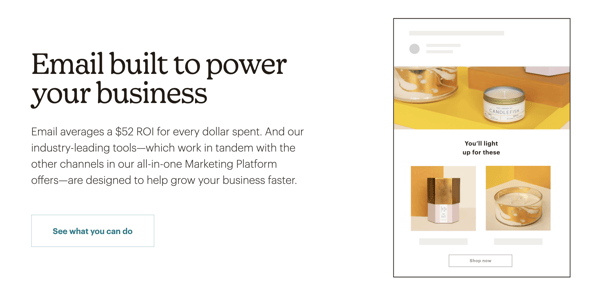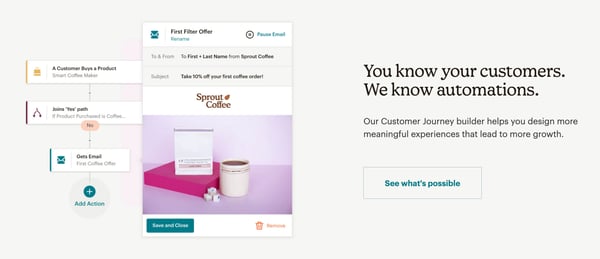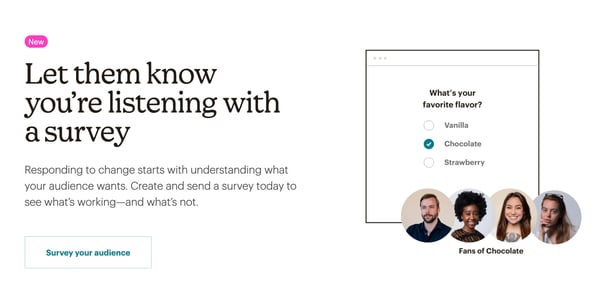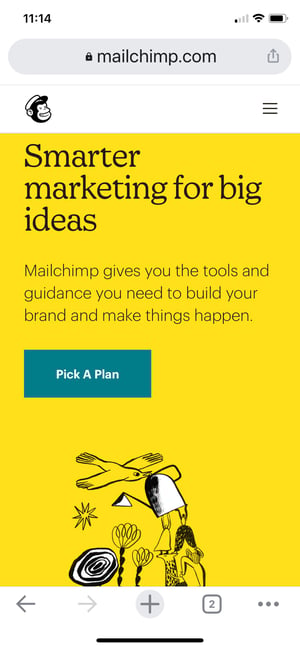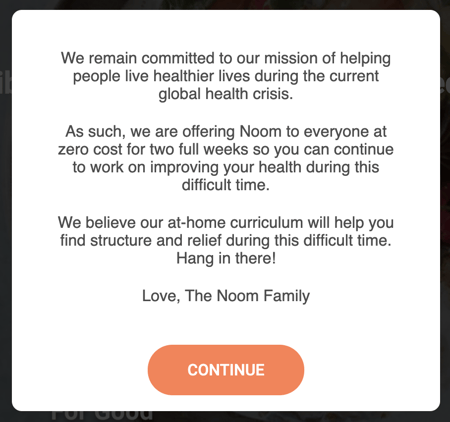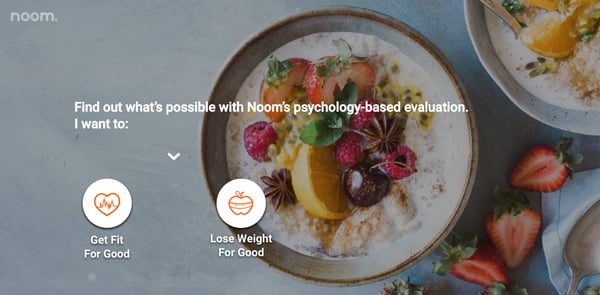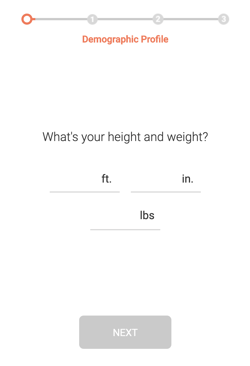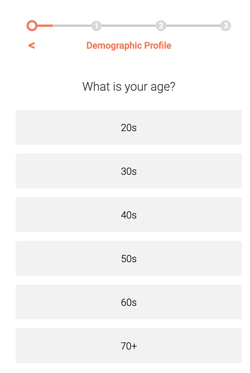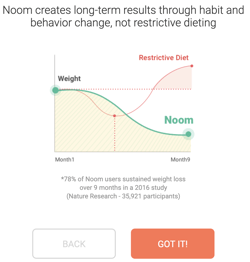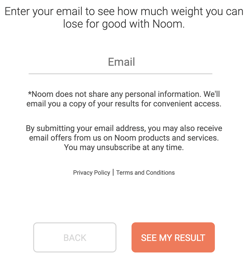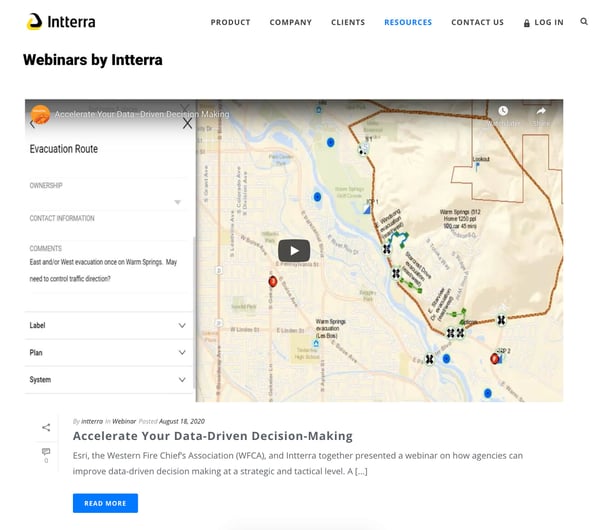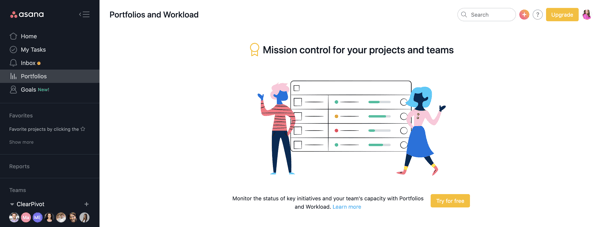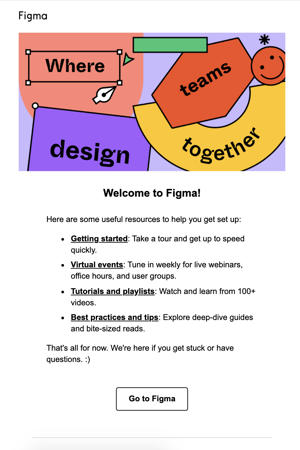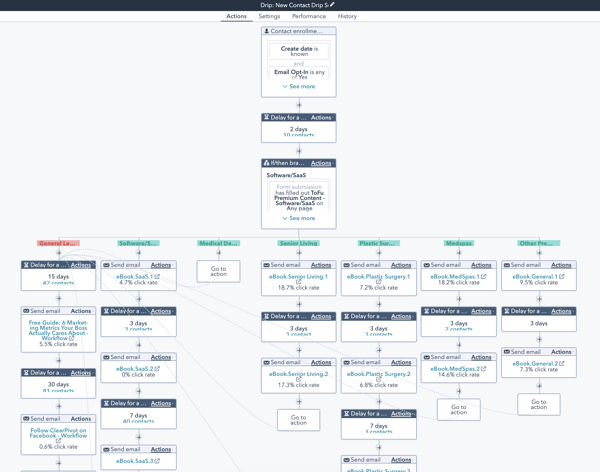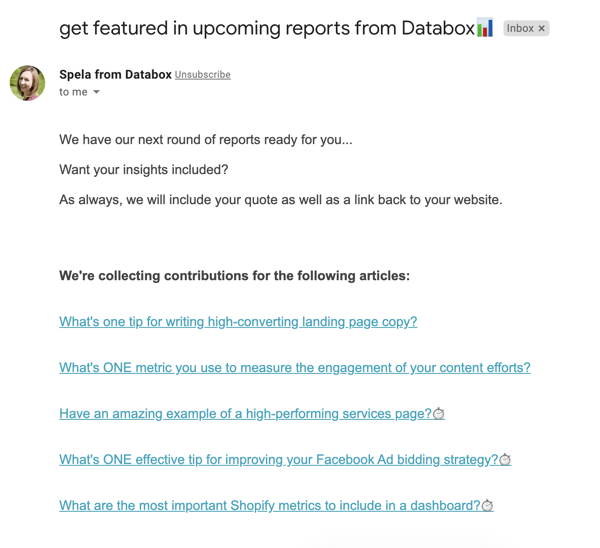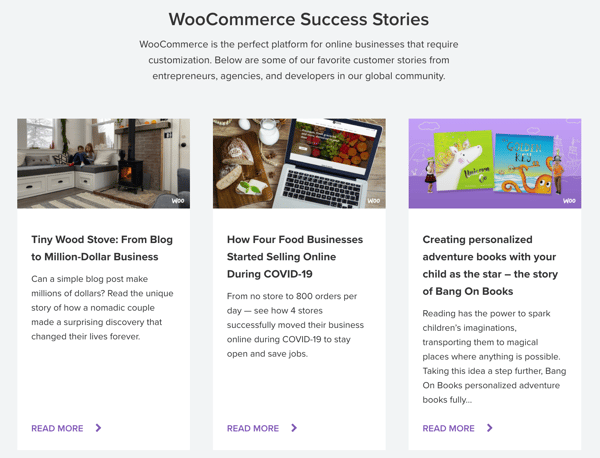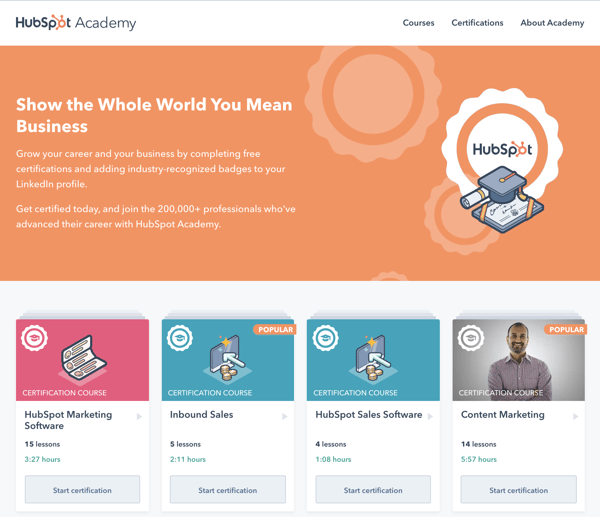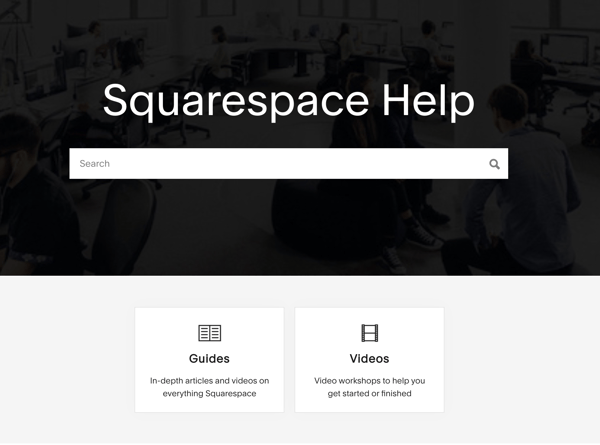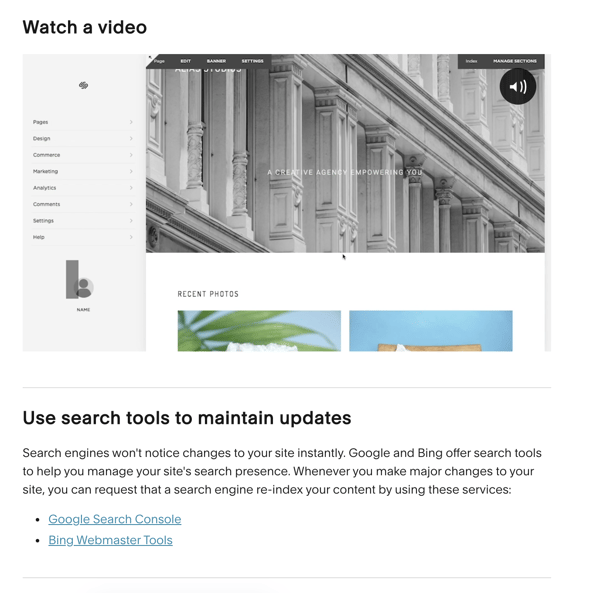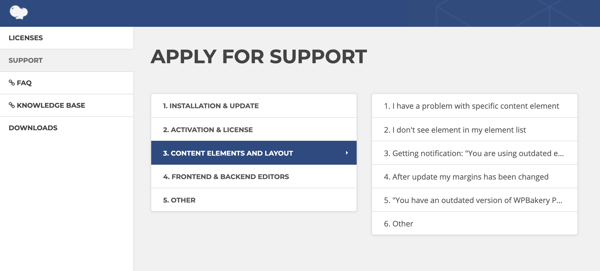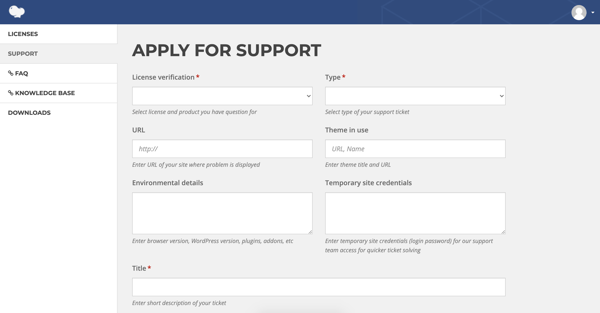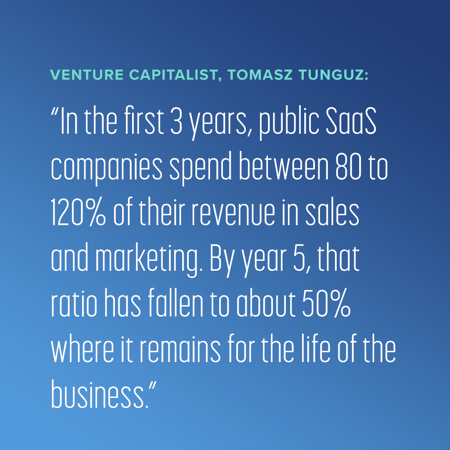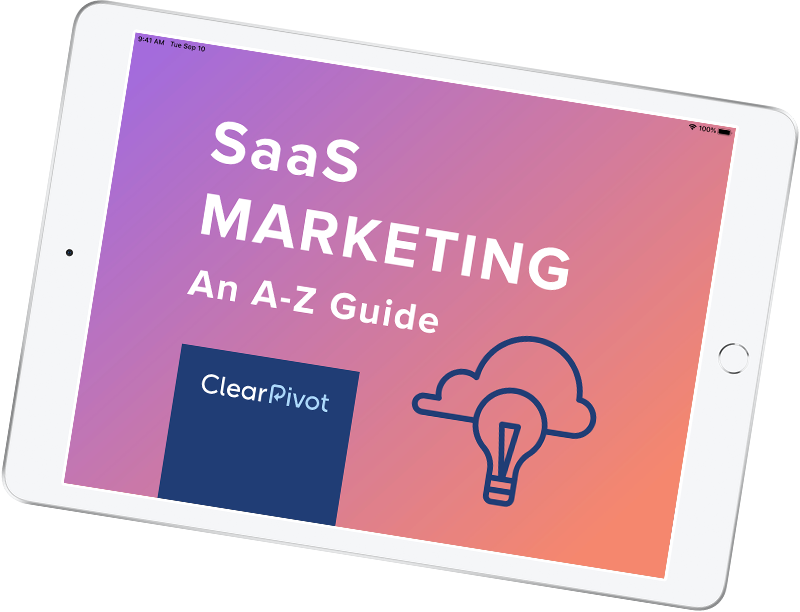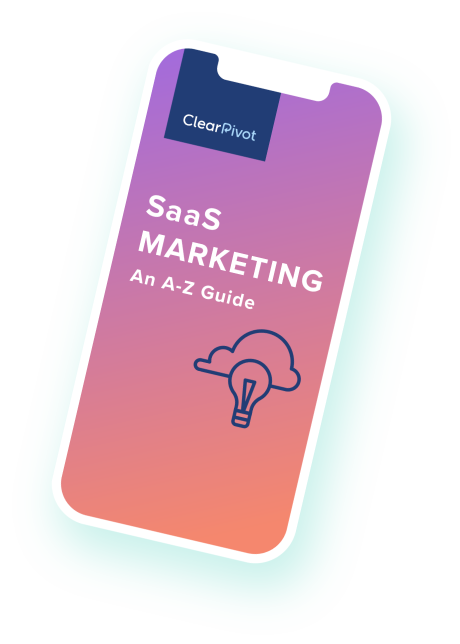Inbound marketing means your prospects find you. Many of the smartest marketers in technology, software, and SaaS know this and make sure that inbound is an important aspect of the marketing strategy. The inbound approach helps you to meet your audience where they are comfortable. Most SaaS users are accustomed to solving their problems by seeking and vetting solutions then taking action without speaking to or consulting another human being. In the B2B SaaS context, the prospect usually has to advocate for adoption among fellow users and decision-makers. Your inbound marketing strategy should be based on content that helps with all aspects of this process. With proper SEO planning and optimization — along with an effective Google search advertising effort — inbound means providing the guidance and knowledge your prospects need most.
Search Engine Optimization: Making It Easy for Searchers to Find You
Search engine optimization, or SEO, is the strategy you use to ensure your content appears in top search results. Study after study has underscored the fact that searchers rarely look past the first page of search results (and you know this about yourself, too, right?), so achieving top-of-the-pack display on Google or other search platforms is imperative.
Highly sophisticated algorithms are constantly working behind the scenes to detect content and index it for quality — with specific scoring systems using natural language processing to reward rich, relevant, and meaningful content. To achieve excellent SEO on your key search terms now, you have to impress those algorithms. You have to produce quality content. This means you are providing insights, details, help, how-tos, recommendations, entertainment, or nuance with every piece you post or release.
Here's an example of top organic search results for the term "simple photo editor." Pixlr and Fotor grab the top two organic search positions, showing the result of carefully-planned, consistent content.
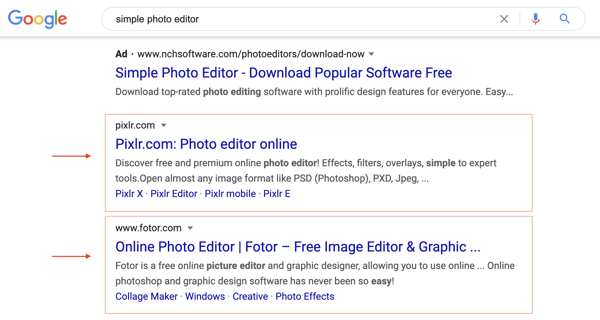
Topic Clusters: The Best Way to Boost Your SEO
How you present content on your website affects SEO as well as your site visitor’s experience. Today, search engines look for more than a keyword match. Google, for example, focuses on search intent. In other words, Google is getting a lot better at identifying the value of content and rewarding content creators who provide it.
By organizing your content in topic clusters, you communicate your depth of knowledge and provide a variety of specified content to meet different search terms. The center of your topic cluster is a pillar page, and your individual topic spokes are then deep dives into all the specific subtopics relating to your central pillar page topic. By linking it all together correctly and including basic SEO best practices on the content you publish, you allow it to be found and served appropriately.
You can picture this system as a hub (the pillar page) with spokes leading out to each subtopic. By producing concentrations of content around each topic, you demonstrate to search engines that you are an authority on the subject, not a website with some random information about it. Greater authority boosts SEO ranking.
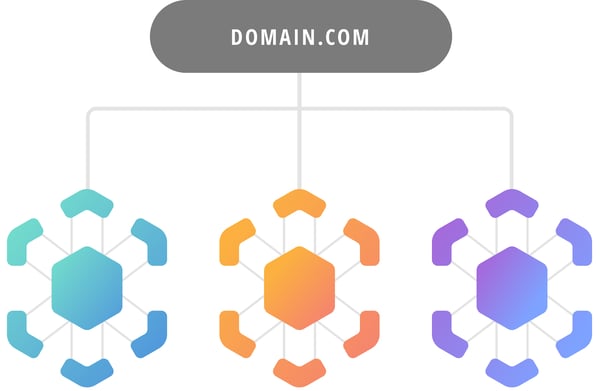
How Do You Identify Topic Clusters?
Content that will rank highest is the content searchers want most, right? So pick the topics you know your top prospects are most interested in. What are your strongest products or product lines? Which ones offer the strongest opportunity for sales growth? Using your personas and analytics data that shows your past website visitation patterns can also help identify valuable content clusters. You can also use SEO tools such as Ahrefs and Keyword Insights to help you refine your topical areas of focus as well.
Most businesses can identify their main categories of products, services, benefits, or pain points, and start to create pillar topics out of those. For software companies and apps, some general categories to think about for core content are:
- Your Prospects’ Pain Points
- Solutions/ Product Benefits
- Product Features
- Industry Verticals (for B2B)
- Buyer Personas (for B2C)
As an example, let’s look at what this might look like for a company that makes online customer satisfaction surveys. They may focus on one of their core solutions — Customer Experience Management.
So in this case, “customer experience management” becomes the Pillar Topic, and you iterate from there on the different aspects of that overall topic that someone might be searching for. From the pillar, you then branch out into problems that people might be searching for and think about topics around the solution your app or platform provides. In this example, the customer survey software company might plan content on:
- How to measure customer loyalty
- How to measure NPS (net promoter score)
- Best practices for getting customer feedback
- How to improve your customer survey response rate
It also helps to ask yourself the question: “What does my prospect need to know in order to buy?”
Or, put more deeply, “What does someone need to know about my solution before they’ll sign up for a subscription to our product? The answers to that question become your topic clusters.
How to Build a Blog That Actually Results in Leads
Your blog is where you will build out most of the subtopics in your Topic Cluster. Properly-built blog articles attract organic search traffic to your website, and by providing value, you have a chance to educate and serve your audience, and guide them into signing up for your solution. A blog is by far one of the most effective marketing tools for SaaS companies.
A quality blog can:
- Subtly introduce your brand and products to potential new customers who browse beyond the specific article that landed them there.
- Create better-informed prospects and leads, thereby shortening the B2B sales cycle.
- Establish your company (or key team members) as experts in your field. This “thought leadership” builds brand awareness. It also builds credibility and trust by highlighting your expertise.
- Help you stay engaged with current or past customers, to build loyalty and repeat business.
One of our favorite examples comes from Ahrefs, which has made itself a go-to source for industry insiders and SEO experts trying to stay informed.
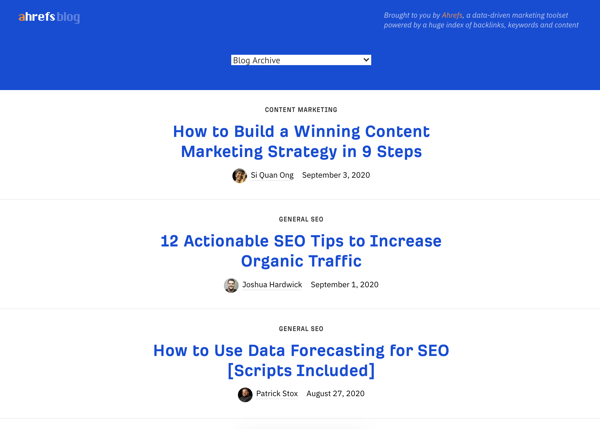
A blog is meant to deliver value to readers, so content should be genuinely informative, and not just a thinly veiled sales pitch. It’s OK to periodically highlight a product and talk about how your company and products support the specific topic — after all, it is your blog — but keep that to a minimum, and make sure your mentions are never overtly sales-y. In fact, your blog should always be conversational — friendly in tone as if you’re telling a story or explaining a subject to someone in front of you. Wit and humor, used appropriately, can help build rapport with your audience.
There is no shortage of excellent, relevant, and interesting topics to write about in your blog. So what can you talk about that will attract and please readers?
- FAQs — anything prospects ask about often is obviously interesting (or concerning) to them, so pick a question and explain the answer
- Less-frequently-asked questions — don’t overlook these! Any potential question or concern that prospects or existing customers may have is relevant
- Industry trends, especially as they affect your company or your customers
- Tips on best practices — how to get the most from a product like yours, why cloud-based services are the way of the future for businesses (or individual consumers), or even some general business management topics
- Give a glimpse behind the scenes — interviews with key team members, a “day in the life” of R&D, your team volunteering for a community activity, etc, all personalize your company, something that’s critical for SaaS businesses where you may never have face-to-face contact with prospects and customers
- Share customer success stories — case studies can be presented in a storytelling format in a blog, and nothing strengthens confidence in your products like the positive experiences of previous customers, so topics like this provide multiple benefits for you
- Pat yourself on the back — did your company, product, or a team member win an award? Did you get a great write up in TechCrunch? Be proud, tell the world! (And be sure to link to that article.)
You don’t even have to write. For one thing, you’re busy, so finding time to put pen to paper (so to speak) could be tough. And lots of people don’t particularly like to write. No worries, you can team up with a professional writer to create great blogs on your behalf. Your marketing agency can help — in fact, they’ll come up with the topics, too.
And here’s a secret: some of the most successful blogs are actually videos. All you need is a couple of introductory sentences and the embedded video. Done. Infographics are also very popular, and you can treat them the same way. Done and done.
The Key to Content Success is Consistency
We talked earlier about the importance of consistency in visuals and messaging. The same holds true for timing. Set a schedule for publishing blog articles, and stick to it. For a SaaS company, blogging weekly, bi-weekly, or monthly is best, especially when you are first launching or announcing lots of new features.
Create an editorial calendar to plan out topics in advance, mixing it up to keep things interesting, and keeping an eye toward your different buyer personas and their stage in the buyer’s journey. You want to make sure you’re building a library of content on specific and searchable topics, but be flexible as well. If something timely comes up — a special honor, a community disaster, etc. — you want to produce a blog that captures the moment. Every time you publish a new blog, share it with your social media followers and email newsletter recipients to increase your reach. And be sure to invite website visitors to subscribe to your blog, by placing quick-click invitations on your home page, other key pages, and the blog itself.
Social Media: Meeting Customers Where They’re Hanging Out
Everybody’s on social media these days, most certainly your tech-forward prospects and customers. You’d better be there, right with them, or they’ll wonder why not. Knowing your personas will help you decide which social platforms are most relevant for your SaaS company, but you’ll probably want to focus on YouTube, Facebook, LinkedIn, and maybe Twitter. Several SaaS companies have found success with Facebook Groups. And forward-thinking B2C SaaS companies should also consider Snapchat or TikTok.
Like your blog, social media gives you a chance to converse with your target audiences, presenting helpful information that helps lead them down the path to sign up for a demo and get into your marketing funnel. That, my friend, is really the key for SaaS social media success: interacting genuinely, providing value, and using content to inspire action. Unlike your blog, social interactions can be much more intimate, especially if you’re posting to a small niche group rather than all your followers. You can even carry on one-on-one conversations if need be. But of course your goal is outreach — and feedback. Two-way conversations that enable you to listen and learn from followers.
TikTok is a social network that keeps up on its own social networking. How meta. Here are two examples from TikTok's social media presence, on Facebook and on Instagram.
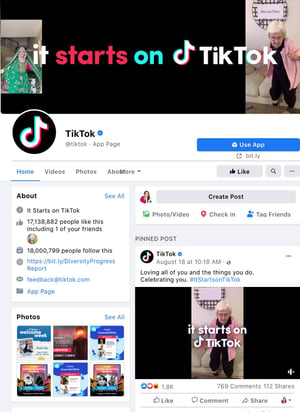
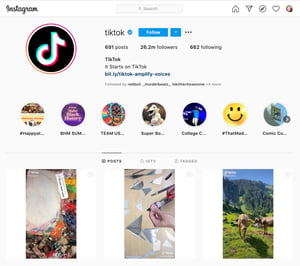
What Should You Post About? The Age-Old Question
You should post about whatever is one the minds of your prospects or customers — essentially the same types of topics you blog about, only in brief:
- Answers to frequently-asked questions or concerns
- “What do you think?” questions — ask what’s the one thing they’ve always wanted to know, then answer the question, or pose a question to solicit feedback and encourage discussion among your followers
- Responses to negative comments or complaints — no matter how wonderful you are, eventually you’ll get some unfriendly posts. While you should take up problems privately with the poster, once you resolve the problem, share the “fix” with your entire audience. You can bet they saw the original post, and explaining (briefly) how you addressed it positively demonstrates to all that your company actually listens and cares. That can be a significant differentiator for a SaaS company in a crowded marketplace.
- Emerging trends in technology or your corner of the tech industry (especially those that affect you and your customers directly)
- Tips on best practices for business operations, using technology to become more efficient, etc.
- Invitations to join your company/team in supporting a specific cause, no matter where they’re located
- Customer success stories — getting your customers to share their own product usage stories or tips allows others to sing your praises in an effective but non-salesy way
- Announce good things that happen to your company — an award, a fabulous new hire, media coverage
- Links to your website! Social media is just the thing to link to blog articles, videos, infographics, and landing pages for downloadable premium content, special offers and so on.
Hot tip: don’t just post through your own company account; encourage team members to post about your company and industry from their personal angle to their own universe of friends and followers, especially on LinkedIn and Twitter. This can greatly extend your reach and “humanize” your company at the same time.
Social sharing is always desirable but responses are even better because they get the conversational ball rolling and encourage others to get actively involved as well. This engagement builds awareness of your brand and products, reinforces your position as a knowledge expert, and helps establish personalized relationships that can lead to sales and loyalty down the road.
In the end, though, social media is most valuable for your company when it motivates people to visit your website and convert into leads that you can nurture individually. So, as you analyze social metrics, focus on conversions generated more than how many likes or shares you’ve accrued.
Of course, you can also pay to advertise on certain social networks such as LinkedIn and Facebook. We’ll talk about that in the next section. Among other things, this is valuable because it is an excellent way to drill down even deeper with targeting, to reach those in specific tech or leadership positions such as CTOs, CFOs, and CEOs. And if you’re speaking only to tech professionals, you can use the tech-speak language that you know and love, with no worries about confusing your audience.
Online Advertising: Expand Your Reach Further or More Precisely
Inbound marketing is designed in many ways to reach target audiences “organically” by putting content you know prospects want right where they’re looking. Because your content is relevant and timely, it should attract attention and trigger a response (a visit to your website). Done right, this can be exceptionally effective. However, you can boost your results even more with paid online advertising.
Online ads enable you to put your brand/message right in front of specific audiences — perhaps the C-suite folks we mentioned earlier, or any other group you want to home in on. Different types of ads allow you to reach different types of targeted groups most efficiently. Many modern ad platforms enable you to do targeting based on important traits such as industry, job title, or job function, which can be a real boon for SaaS marketing where you want to reach specific types of IT professionals or decision-makers.
So you might consider:
Pay-Per-Click Search Advertising
Pay-per-click (PPC) search ads are the ones you see displayed with search results on Google, Bing, etc. They appear based on targeting criteria you set using keywords, which the search engine matches up with whatever the searcher types into their browser. That means your ad is automatically relevant. And if it’s well-crafted, your prospect will click through to your website. You only pay when they do that — hence the name, pay-per-click.
Here's an example of the PPC ads that come up when Google searching for "contact management app." Interestingly, we see options for products as well as content focused ads from comparison and review sites.
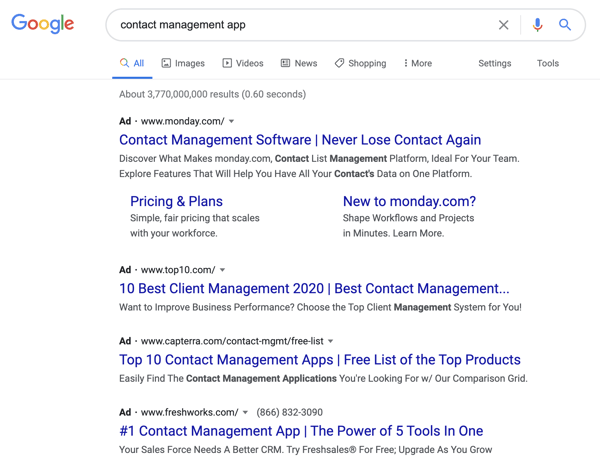
Paid Social
Social media ads are something we noted earlier, and they can be very effective in reaching a larger percentage of your target audience as well as your existing followers. (Many social users don’t realize that everything they post isn’t necessarily organically shown to all their connections. In fact, non-sponsored Facebook posts typically reach only about 2-5% of your followers.) You can advertise simply to boost reach, and you can also increase results further by creating highly engaging ads that include video, slideshows, etc.
Here's a simple example from Zapier, focused on one important benefit.
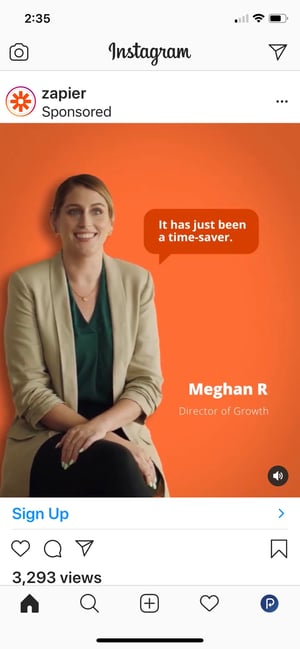
Display Ads
Display ads, also called banner ads, are the ones you see at the top, off to the side, or at the bottom when you visit a web page. These are typically very concise, like a billboard — an eye-catching visual and very short message — but also with a button to click to take action (visit your website).
Here are two examples of display ads from SEMRush that appeared on Wired.
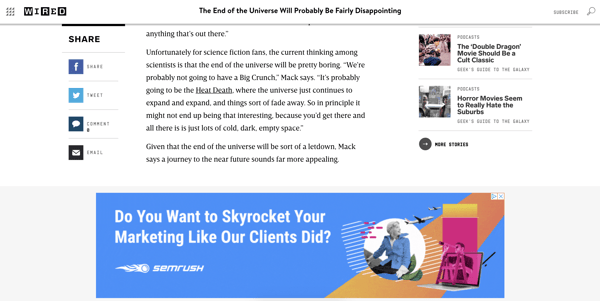
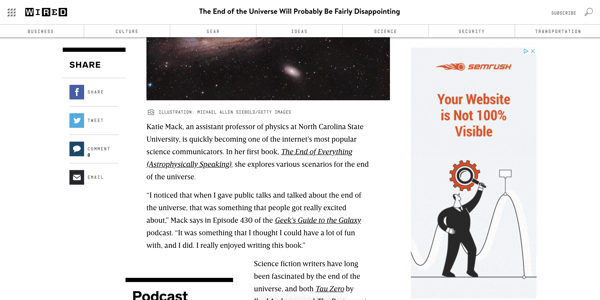
Video Ads
Video ads can be used across many of these platforms, but also specifically served on platforms like YouTube and Vimeo, or served via video-specific ad networks like Springserve or SpotX. These networks work similarly to the Google Ads network. One way that SaaS companies can easily create video-based ads is by using screen captures of their software or app in action.
Here's one of the video ads permeating our YouTube experience lately, a quick, straightforward message from Monday.com.
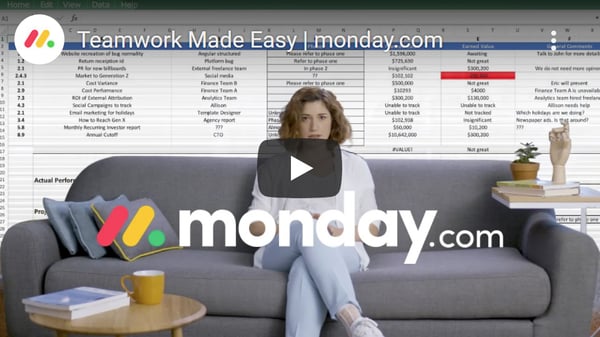
Retargeting Website Visitors
Retargeting ads seek out website visitors who left without converting by opting-in (subscribing to your blog, downloading premium content or a free trial, etc.) or making a purchase. The ad that person sees reflects the content they were looking at before they left your site, keeping your brand and message in front of them and, hopefully, inspiring them to return to take further action with you. You can incorporate retargeting into any of the types of ads we’ve mentioned above (search ads, display ads, video ads, and social media ads).
One company followed us quick with retargeting after we checked out their pricing page. We see you, Salesforce. Here are two display ads we encountered on the Washington Post website shortly after engaging with the CRM giant's website.
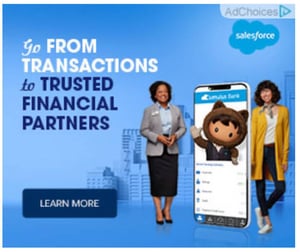
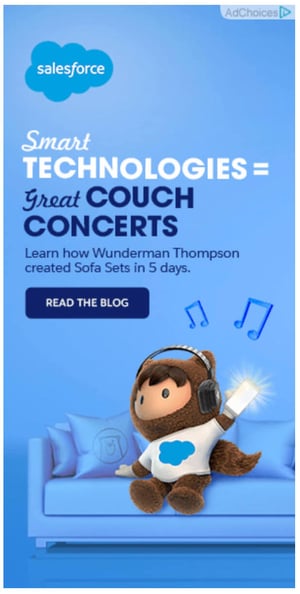
Sponsored Content
Native advertising (aka. sponsored content) is the online version of an advertorial you might see in the newspaper or a magazine — a guest article or infographic created by you and overtly promoting your brand or products, and which appears on someone else’s website. This content is called “native” because it is formatted in a similar way to the rest of the non-sponsored content on the site (though the native advertising still needs to have some sort of notification of your sponsorship of the content in order to avoid conflict-of-interest legal issues).
Entrepreneur.com provides a good example of sponsored content with its selection of business articles.
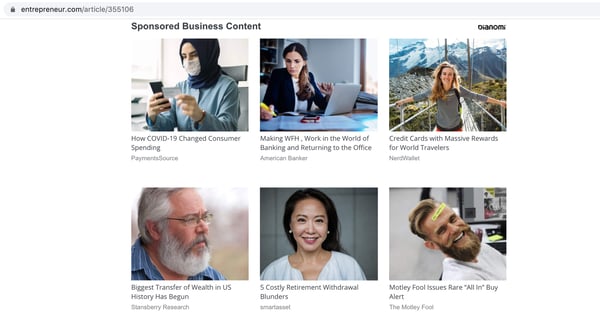
Industry newsletter sponsorships can be particularly valuable for SaaS companies who need to reach “insider” audiences. Sponsorships can be pricey, though, so if your company is still small you might want to put this on your list of future marketing opportunities. Some examples of industry newsletters include theSkimm, the Hustle, and Product Hunt. Also, advertising on tech-specific web pages such as relevant categories within Capterra or tech review pages on G2 can also make sense for SaaS companies.
Digital Advertising Success
Online ads must attract attention and motivate the viewer to click through to your website, responding to whatever call to action appears in the ad. To ensure that, ads must be strategically created, considering factors such as:
- The content of the ad (video, graphics, copy)
- Ad targeting and placement
- Keyword choices and tracking
- Bidding prices and thresholds (for PPC)
- Overall campaign management, tracking, and analysis
- Associated landing page design and content (where those who click through will arrive and convert into leads)
Here's a good landing page example from The.com, a new no-code website building platform.
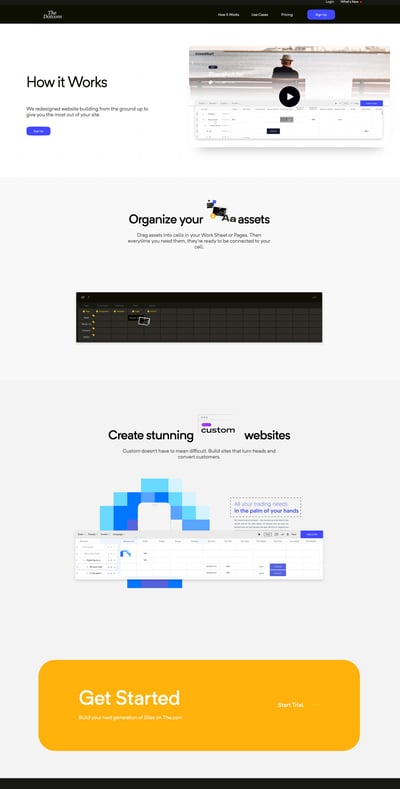
Analysis and action are the keys to online advertising success. Being clear about goals, and then choosing the right metrics to measure them will make your campaigns most effective, because you will continue to grow from what you learn about your users’ actions.
Online advertising platforms will give you hundreds of trackable metrics that you can use. If you’re not sure where to begin, start with these four:
- Click-through rate
- Cost per click
- Conversion rate
- Cost per conversion
If your ad is getting lots of impressions but not many click-throughs, your targeting might be wrong. Or if you are getting lots of click-throughs but not a lot of conversions, it might be that your ad is working well but your landing page needs improvement. It all works together. That’s why content planning, consistency and relevancy is so important.
A truly effective advertising strategy will pull in long term and short term KPIs, and intertwine business goals from both marketing and sales. So, in addition to tracking things like cost per click and cost per conversion, most SaaS advertising strategies will focus on specific goals like:
- Cost per free trial signup
- Free trial to paid user conversion rate by source
- Churn rate for paid media cohorts compared to other cohorts
Offline Advertising for SaaS? Don’t Overlook It
Although an inbound marketing strategy based in strong digital best practices many times makes the most sense for SaaS companies, there may be times when you can effectively use certain traditional advertising channels as well. For example, you can leverage direct mail to gain the attention of higher-level executives who are often impervious to email approaches. However, since direct mail is expensive, campaigns must be carefully planned, targeted, and executed. For instance, a marketing automation platform once sent over a personalized art print to our ClearPivot team. It was nicely framed with an invitation for the entire team to enjoy lunch on them if we agreed to a demo of their software. It certainly got our team’s attention!
Don’t want to go that big? Send printed direct mail that appears to be hand-written — a nice touch that virtually guarantees your mailer will get a second, closer look. You can also integrate automated direct mail campaigns with your CRM software, to achieve more precise targeting, even to pinpoint individual recipients. Add a unique personalized URL to each recipient’s mailer, sending them to their very own personalized landing page. Talk about impressive.
Larger SaaS companies with larger marketing budgets are also re-discovering the value of billboards and other broad-based offline advertising options. If you want to reach influential software engineers on their morning commute, for instance, a billboard along I-280 in San Francisco is hard to beat. The nature of your product, scope of your business, and specific challenges and desires of your personas will tell you if and when the time is right to consider expanding your marketing in this way.
Industry Trade Shows and Events
If you were a traditional brick-and-mortar business, you could host special events at your store. SaaS companies obviously don’t have a storefront. But so what if you don’t have a physical location! You can and should still work events into your SaaS marketing strategy because events have special value. They bring you face-to-face with prospects and customers.
So get out there and mingle. Industry trade shows are an obvious choice. Exhibitor space is usually costly, so it can sometimes be better to reserve your budget for smaller niche shows where you can be most relevant and stand out better. Or wait to become a vendor until your marketing budget is bigger, and simply attend as a regular attendee at first. Consider taking multiple team members if the show is vast, so you can fan out and meet as many people as possible. Talk to people in the booths, on the show floor, in the seminars, and of course during those precious networking periods in the bar and over dinner. Remember themes and common questions and make sure to compare those notes. Events can be a huge eye-opener for product development in terms of requested features, or a source of marketing ideas as you discuss common stories among the responses to your solution.
One place to find likeminded tech industry makers and marketers is MozCon. Have you been?
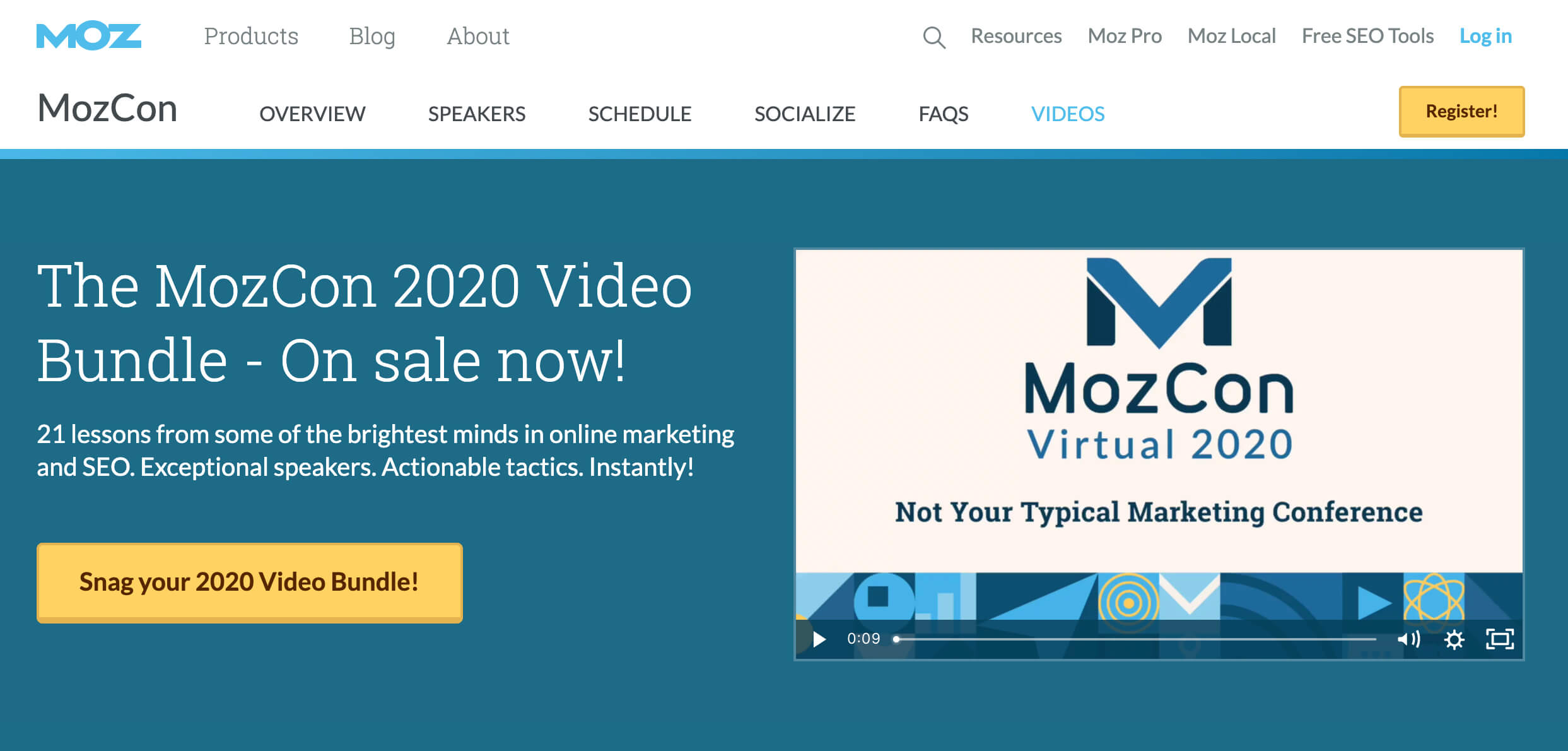
When is it Time to Actually Invest in a Trade Show Booth?
Some events provide a more affordable, second-tier opportunity for companies that wish to exhibit but can’t afford to go whole-hog with a booth. This comes in the form of static display tables placed in strategic areas such as reception space and lobbies. This can be a good way to introduce your brand to a new audience if expected attendees represent your top prospects. Whether you have a table or a booth, make the most of your time and monetary investment by:
- Collecting business cards or asking visitors to leave their name and email in return for a prize of some sort. It can directly relate to your SaaS product, or it can be something like an iPad that is sort-of relevant and highly desirable. Announce the winner before the show ends, to get your name in front of everyone one more time.
- Set up laptops or tablets to run a product demo, or even better, project your main demo laptop onto a big screen in your booth so multiple people can watch at once.
- Capture leads with your main call-to-action to sign up for a free trial of your solution at the booth. The idea is to get these people in your funnel, and start nurturing them toward a paid subscription by using your content plan to help them get the most your of your solution
- If someone isn’t ready to sign up, offer them event-exclusive premium content. This could be a tip sheet, whitepaper or eBook relating to the theme of the show, a video, or even a free 30-minute solutions call where one of your experts walks them through their own unique problem or question. Create a corresponding landing page for your website where folks can also register to get this special content, either before or after the show. (This is also a great way to promote your presence at the show ahead of time.)
Trade Show Tip: Make sure you have at least multiple tablets if you’re offering trials and premium content, in case your booth gets crowded. You will also want to use a form that resets any browser cookies after each submission to avoid people accidentally overwriting each others’ submissions.
It’s All in the Follow Up
Your trade show sign-ups are collected through forms that should be linked to a CRM and marketing automation platform like HubSpot or Marketo. This allows you to create segmented email series to follow up, deliver premium content or special-access details, and then delight with the specific value that leads your prospects to the subscription checkout.
Don’t wait too long to get started sending those messages. Once you deliver what the prospect signed up for, start a conversation by asking what part of the show was the most enjoyable or valuable for them. Be sure to include a call to action in each email — a reminder to download the premium content, an invitation to view a demo, or a link to sign up for a trial. Have your salespeople send personal messages to attendees to connect via LinkedIn, if that feels appropriate.
Thought Leadership and In-Person Networking
While direct mailing or printed messages might not end up in your lead generation plans, you may consider an effort toward thought leadership opportunities. Speaking at events or meetups with your potential user community is a great way to share your solution and generate brand awareness. The point is to create a personality for your CEO as an industry expert, generating faith in your expertise and, by extension, your solution.
One example is Jason Fried, co-founder of 37Signals and Basecamp, who continually offers expertise as an industry leader. Here's a TEDTalk from Fried on why work doesn't get done at work.
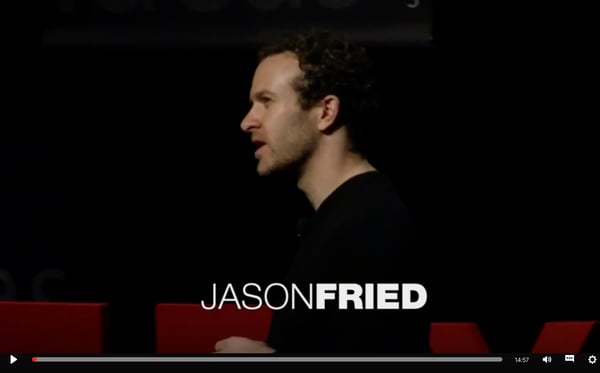
Partnerships and Community: Yes, It Matters for SaaS
Whether your target audience is B2B, B2C, or a mix of both, there is another way to build brand awareness and endear your company to prospects and current customers: partnerships. You can team up with a complementary business to host an online event or participate at a live event, as well as co-promote using other inbound marketing means.
But the real surprise may be cause-related marketing. Today’s customers want to buy from companies that prioritize sustainability and supporting their community — even when it comes to their platforms and apps. Whether you pick a tech-based charity like Girls Who Code, a big national organization such as Charity: Water, or something in your own backyard where your team can get personally involved, aligning your brand with doing something worthwhile is smart business and a significant way to boost the spirits of your staff and customers.
Talk it up, in your blog and your social media posts, inviting readers and followers to join you or talk about what they’re doing in their own community. Start a challenge, and match donations. When you partner with a non-profit, they will be happy to publicize your support, too, increasing your marketing reach. Everyone benefits.
Here's an example of how Sprout Social highlights its agency partner program, asking partners to "grow with us."
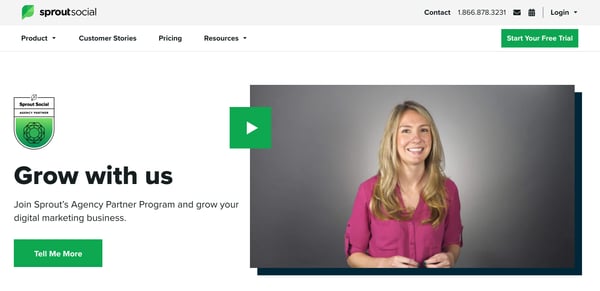
Social Media Tip: Make sure your social branding efforts are genuine and align with your real-life practices as a company. Being disingenuous can come back to haunt you.
